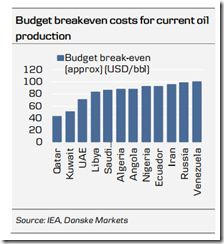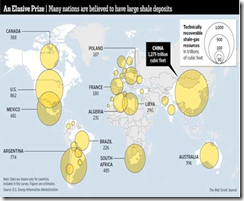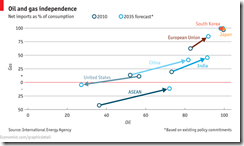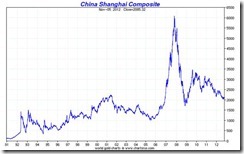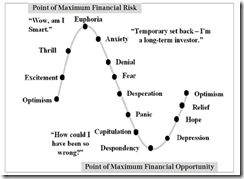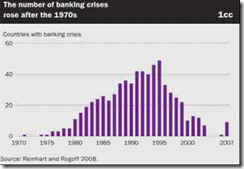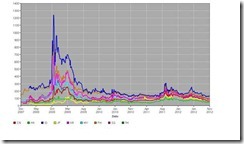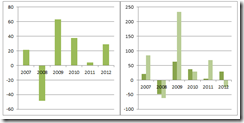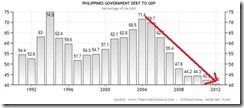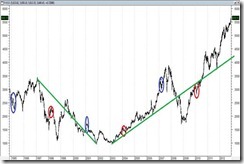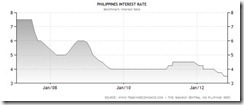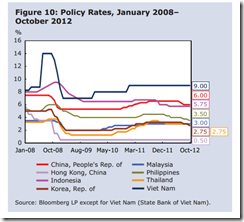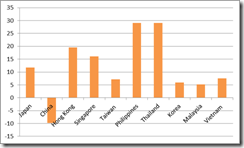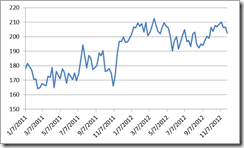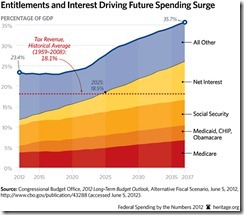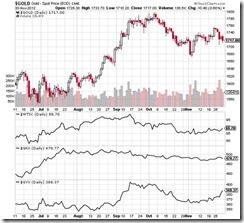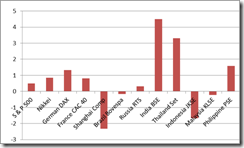Pictures of the year 2012 from Reuters
The art of economics consists in looking not merely at the immediate hut at the longer effects of any act or policy; it consists in tracing the consequences of that policy not merely for one group but for all groups—Henry Hazlitt
Saturday, December 08, 2012
Robert Higgs: How Economic Warfare Provoked Japan’s Attack on Pearl Harbor
71 years ago December 7, the Japanese government bombed Pearl Harbor. This “day of infamy” has been portrayed by the mainstream as having been a “good war”.
In truth, there is more than meets the eye. America’s entry to World War II had been a contrivance.
Austrian economist Professor Robert Higgs in a recent talk narrates of how US president Franklin D. Roosevelt baited the Japanese into attacking the US, that paved way for America’s participation in World War II.
The gist from Mises Institute (bold mine)
When Franklin D. Roosevelt became president in 1933, the U.S. government fell under the control of a man who disliked the Japanese and harbored a romantic affection for the Chinese because, some writers have speculated, Roosevelt's ancestors had made money in the China trade. Roosevelt also disliked the Germans in general and Adolf Hitler in particular, and he tended to favor the British in his personal relations and in world affairs. He did not pay much attention to foreign policy, however, until his New Deal began to peter out in 1937. Thereafter he relied heavily on foreign policy to fulfill his political ambitions, including his desire for reelection to an unprecedented third term.When Germany began to rearm and to seek Lebensraum aggressively in the late 1930s, the Roosevelt administration cooperated closely with the British and the French in measures to oppose German expansion. After World War II commenced in 1939, this U.S. assistance grew ever greater and included such measures as the so-called destroyer deal and the deceptively named Lend-Lease program. In anticipation of U.S. entry into the war, British and U.S. military staffs secretly formulated plans for joint operations. U.S. forces sought to create a war-justifying incident by cooperating with the British navy in attacks on German U-boats in the northern Atlantic, but Hitler refused to take the bait, thus denying Roosevelt the pretext he craved for making the United States a full-fledged, declared belligerent—a belligerence that the great majority of Americans opposed.In June 1940, Henry L. Stimson, who had been secretary of war under William Howard Taft and secretary of state under Herbert Hoover, became secretary of war again. Stimson was a lion of the Anglophile, northeastern upper crust and no friend of the Japanese. In support of the so-called Open Door Policy for China, Stimson favored the use of economic sanctions to obstruct Japan's advance in Asia. Treasury Secretary Henry Morgenthau and Interior Secretary Harold Ickes vigorously endorsed this policy. Roosevelt hoped that such sanctions would goad the Japanese into making a rash mistake by launching a war against the United States, which would bring in Germany because Japan and Germany were allied.The Roosevelt administration, while curtly dismissing Japanese diplomatic overtures to harmonize relations, accordingly imposed a series of increasingly stringent economic sanctions on Japan. In 1939, the United States terminated the 1911 commercial treaty with Japan. "On July 2, 1940, Roosevelt signed the Export Control Act, authorizing the President to license or prohibit the export of essential defense materials." Under this authority, "[o]n July 31, exports of aviation motor fuels and lubricants and No. 1 heavy melting iron and steel scrap were restricted." Next, in a move aimed at Japan, Roosevelt slapped an embargo, effective October 16, "on all exports of scrap iron and steel to destinations other than Britain and the nations of the Western Hemisphere." Finally, on July 26, 1941, Roosevelt "froze Japanese assets in the United States, thus bringing commercial relations between the nations to an effective end. One week later Roosevelt embargoed the export of such grades of oil as still were in commercial flow to Japan." The British and the Dutch followed suit, embargoing exports to Japan from their colonies in Southeast Asia.Roosevelt and his subordinates knew they were putting Japan in an untenable position and that the Japanese government might well try to escape the stranglehold by going to war. Having broken the Japanese diplomatic code, the American leaders knew, among many other things, what Foreign Minister Teijiro Toyoda had communicated to Ambassador Kichisaburo Nomura on July 31: "Commercial and economic relations between Japan and third countries, led by England and the United States, are gradually becoming so horribly strained that we cannot endure it much longer. Consequently, our Empire, to save its very life, must take measures to secure the raw materials of the South Seas."Because American cryptographers had also broken the Japanese naval code, the leaders in Washington also knew that Japan's "measures" would include an attack on Pearl Harbor. Yet they withheld this critical information from the commanders in Hawaii, who might have headed off the attack or prepared themselves to defend against it. That Roosevelt and his chieftains did not ring the tocsin makes perfect sense: after all, the impending attack constituted precisely what they had been seeking for a long time. As Stimson confided to his diary after a meeting of the War Cabinet on November 25, "The question was how we should maneuver them [the Japanese] into firing the first shot without allowing too much danger to ourselves." After the attack, Stimson confessed that "my first feeling was of relief . . . that a crisis had come in a way which would unite all our people."
Read the rest or the start of his talk here
This explains the "coincidence" or “the stroke of luck” on why none of the three US aircraft carriers stationed at Pearl Harbor where present during the time of strike.
[Updated to add: Also think about how political leaders lack the compunction to even offer their citizens as sacrificial lambs (Pearl Harbor casualties 2,402 deaths 1,282 injured) in order to pursue personal political agenda.]
[Updated to add: Also think about how political leaders lack the compunction to even offer their citizens as sacrificial lambs (Pearl Harbor casualties 2,402 deaths 1,282 injured) in order to pursue personal political agenda.]
Today, the same strategy of economic and financial sanctions has been slapped on Iran.
The great French proto-Austrolibertarian Frédéric Bastiat was right, if goods don’t cross borders, armies will. Protectionism is an act of war.
Friday, December 07, 2012
Study: Beer has Anti Virus Powers
It’s yuletide season, which means lots of parties and for some, beer guzzling sessions
Nonetheless a study shows that beer swilling has good health effects.
This, for me, is really a confirmation bias (justification to drink more beer).
From Yahoo/AFP
Consuming large quantities of a key ingredient in beer can protect against winter sniffles and even some serious illnesses in small children, a Japanese brewery said citing a scientific study.A chemical compound in hops, the plant brewers use to give beer its bitter taste, provides an effective guard against a virus that can cause severe forms of pneumonia and bronchitis in youngsters, Sapporo Breweries said Wednesday.In research with scientists at Sapporo Medical University, the compound -- humulone -- was found to be effective in curbing the respiratory syncytial (RS) virus, said the company, which funded the study."The RS virus can cause serious pneumonia and breathing difficulties for infants and toddlers, but no vaccination is available at the moment to contain it," said Jun Fuchimoto, a researcher from the company.The virus tends to spread in winter and can also cause cold-like symptoms in adults.Fuchimoto said such small quantities of humulone were present in beer that someone would have to drink around 30 cans, each of 350 millilitres (12 oz), for it to have any virus-fighting effect.
Cheers!
Why the Shale Gas Revolution will go on…
...because the benefits enormously outweigh the costs.
Prolific author Matt Ridley writing at the UK Telegraph enumerates them
1. Cheap and abundant energy should help spur economic growth
Cheap energy is the surest way to encourage economic growth. It was cheap coal that fuelled the Industrial Revolution, enabling British workers with steam-driven machinery to be far more productive than their competitors in Asia and Europe in the 19th century. The discovery, 12 years ago, of how to use pressurised water (with less than 1 per cent kitchen-sink chemicals added), instead of exotic guar gel made from Indian beans, to crack shale and release gas has now unleashed an energy revolution almost as far-reaching as the harnessing of Newcastle’s coal.
2. Environmental Friendly
And if cutting carbon emissions is what floats your boat, you will like shale gas even more. The advent of cheap gas, by displacing coal from electricity generation, has drastically cut America’s carbon dioxide emissions back to levels last seen in the early 1990s; per capita emissions are now lower than in the 1960s.
3. Market driven energy and less baggage on taxpayers compared to political driven alternatives
Britain’s subsidised dash for renewable energy has had no such result: wind power is still making a trivial contribution to total energy use (0.4 per cent) while most renewable energy comes from wood, the highest-carbon fuel of all.
4. Alter geopolitical environment
Best of all, the shale revolution is causing consternation in Moscow and Tehran, which had expected to corner the natural gas market in decades to come. As a sign of the panic it is inducing, a forthcoming Matt Damon anti-fracking film was financed partly by a company owned by the United Arab Emirates government. (The film’s plot had to be rewritten after the authorities absolved a gas company of causing pollution in a well-publicised case in Dimock, Pennsylvania.)
I might add that the Shale gas revolution will likely compel authoritarian resource rich, or might I rather say resource curse, economies to liberalize, knowing that their stranglehold on energy supplies faces stiff competition.
(chart from Danske Bank)
The Shale boom will also put tremendous pressure on the authoritarian regimes' energy based welfare states, which has been the main source of the political existence.
So the shale gas revolution will likely bring on more trade, more reforms and lesser welfare states
5. Safe technology
Exploiting shale gas is safe, according to the Royal Society and the Royal Academy of Engineering. Fracking of one kind or another has been used here for decades; the earthquakes it causes are no worse than a bus going past; it does not use much water compared with other industries; it’s not responsible for flammable tap water; and methane leakage is not as bad as has been claimed. Nor, with a mile of rock between the fractures and the aquifers, does it cause groundwater contamination. Last year there were 125,000 fracs in the United States. According to the Environmental Protection Agency, no frac has ever contaminated groundwater.
The Shale gas boom will initially benefit the US and Canada, but will most likely spillover to the rest of the world.
Shale gas reserves can be found in many countries. The Wall Street Journal notes that
U.S.-government contracted study of 32 countries estimated they held 6.6 quadrillion cubic feet of shale gas, more than 50 years worth of current global consumption. The U.S. held 862 trillion cubic feet, or just 13% of the estimated resourceThe study didn't offer an estimate of either the volume of oil in global shales or the size of massive shale deposits in Russia and the Middle East. Other estimators have suggested this figure could be high, but nonetheless expect there is vast untapped energy in shales world-wide.
Although the boom has several obstacles to overcome mostly in terms of politics: government ownership of mineral rights, environmental concerns and the lack of infrastructure.
For instance, countries like France and Bulgaria has banned hydraulic fracking. China huge shale reserves are situated in arid or heavily populated areas where accessibility to water poses as constraints.
There are also technology constraints or access to technology which so far has limited market participants.
Nevertheless, the shale revolution has been estimated to shift energy consumption and trade patterns globally.
The US may reach self-sufficiency and become an exporter by 2035
Notes the Economist,
the same technology is unlocking shale oil, which along with fuel efficiency measures, could slash America's dependence on oil imports. With all sources of energy taken together (including nuclear, renewables, etc) the country could hit net self-sufficiency by 2035. The rest of the world is set to rely even more heavily on imports, with the exception of Japan and South Korea, which already import all their oil and gas, and the ASEAN region, which will have less of a surplus to export
Recently I pointed out that Asians have began piling on on Shale gas boom through record corporate takeovers of Shale companies
Mr. Ridley is right, countries that turn their backs on cheap energy will lose out
Thursday, December 06, 2012
Video: Christmas Carol: Deck the Halls with Macro Follies
Econostories.tv has an amusing video debunking macroeconomic fallacies. (thanks to Coordination Problem Blog)
Lessons from the Sad Experience of China’s Retail Stock Market Investors
Sovereign Man’s Tim Staermose thinks that China’s glum retail sentiment on the stock market appears as a bullish contrarian signal, [bold mine]
Since 2009, the benchmarkShanghai Stock Exchange index has been in a deep funk. Last week, in fact, the index hit 4-year lows and dipped below the psychological 2,000 level.Further, a recent survey of 8,438 Chinese households published by China’s Southwestern University of Finance and Economics found that 77% of those who had invested in Chinese stocks lost money.This is huge. Chinese retail investors account for around 80% of the transactions on domestic exchanges. Famous for being active traders with investment behavior bordering on gambling, Chinese retail investors are now completely disillusioned with the market.According to JP Morgan, as of the end of October 2012, 44% of all Chinese stock trading accounts had been dormant (i.e. without activity) for at least a year. At the end of 2007, the comparable number was just 2%… an enormous difference.These are the sorts of data points that contrarians love. Whenever the retail crowd runs loses interest in investing, it generally suggests that the bottom is in. Today, China fits that bill.
There are two aspects to draw from the above account
One: sentiment of retail investors as market indicator
Chart from chartrus.com
China’s case looks like the classic depiction of the popular Wall Street axiom, “Bears make money, bulls make money but pigs get slaughtered”
It’s a showcase of how artificial booms seduces the gullible and vulnerable.
It essentially starts with the adage “In a bullmarket, everyone’s a genius.”
Hardly anyone realizes that in an inflationary boom, whatever analytical method one adapts gets to be validated via ascending prices, usually manifested through the rising tide lifts all boat effect.
Easy money lures the public to engage in reckless behavior. The string of initial successes would embolden neophytes to take on more aggressive risk taking. The public will even expand or increase their speculative exposures by engaging in margin trades with the hope of snaring greater profits. Emotions will dominate trading activities.
Mainstream narratives will rationalize the public’s intensifying derring do actions, even if they have little to do with reality
As I previously wrote, (bold original)
And the rising tide compels people to make various attributions to market actions, such as economic growth or earnings or mergers and acquisitions, no matter how loosely correlated they are or how little relevance they are with the genuine market drivers. Most of this account for as popular dogmatic fables or widely held superstitions as evidences does not support the causality nexus from such premises.
And most people will fall for the self-serving (attribution) bias believing that they have attained success through personal skills and that failures are brought about by misfortune or external forces.
All this leads to the fatalistic “overconfidence”.
Worst, little is understood of the real factors driving boom-bust episodes.
During the boom phase, rising prices will be seen as perpetual dynamic or even an entitlement. And any fall in prices will be tainted with political color “insider trading, price manipulation and etc…”
And when the stage has been reached where you have unintelligent money via housemaids, gardeners, farmers pouring into stocks, such should be seen as warning signs
Again in my article cautioning the idea that household helpers should be enticed to speculate in the stock market, I wrote,
During the acme of the bubble cycle in China in 2008, the onrush of retail punters into stocks, which included housemaids, signified the peak of frenzied activities.As Shujie Yao Dan Luo of The University of Nottingham wrote in their recent study, (emphasis added)``Most of these investors, which included farmers, cleaners, taxi drivers and house maids, knew little about stock markets and how share prices were determined. Many of these people started investing in the stock markets when prices had already risen rapidly to peak levels, just before the market bubble burst. The participation of these ‘envious’ investors artificially prolonged the bullish market and created a much larger market bubble than would have occurred had they not become involved.”In short, retail investors GOT SINGED and were left HOLDING THE EMPTY BAG. They accounted for as the FOOL in the Greater Fool Theory.
I have seen this personally before.
In the Philippine Phisix bear market trough of 2002, I spoke with several retail accounts assigned to me by my principal, to persuade them to take advantage of what I believed as the market’s major inflection point.
Then the typical response to my suggestion has been one of embitterment. Yet I wasn’t speaking to lowly accounts but to the upper middle and to the wealthy accounts.
I even recalled being cussed at by a disenchanted retail account. The person said that the stock market was a fraud and had been manipulated and that my being part of it means I am part of the cabal.
Well, the market began to recover in March 2003 or about less than a year after I made my pitch. The rest is history
Thus, I am in sympathy with contrarian view that extremely negative sentiment or depression by retail investors can be construed as signs of the market’s bottom.
Next, has China’s Shanghai index bottomed?
This really depends if there are still significant degree of real savings from domestic wealth generators from which the Chinese government's reflationary policies will draw from.
As Austrian economist Dr. Frank Shostak explains,
The only way fiscal and monetary stimulus could "work" is if the flow of real savings (i.e., real funding) is large enough to support (i.e., fund) government activities and activities that sprang up on the back of loose-monetary policy while still permitting a positive rate of growth in the activities of real-wealth generators. (Note that the overall increase in real economic activity is in this case erroneously attributed to the loose fiscal and monetary policies.)If however the flow of real savings is falling, then, regardless of any increase in government outlays and monetary pumping overall, real economic activity cannot be revived. In this case, the more the government spends and the more the central bank pumps, the more will be taken from wealth generators — thereby weakening any prospects for a recovery.
As explained last night, China’s Shanghai Index posted the biggest gains in 3 months of 2.9% yesterday. This could highlight a dead cat’s bounce (from oversold conditions), or might be suggestive of an inflection on the back of recent easing policies. I would add to this the depressed retail sentiment.
Today, the Shanghai index has been little change.
Wednesday, December 05, 2012
Dividend Cliff: Dividend Payments by US Companies Triple
People respond to incentives. Social policies influence people incentives to act.
Prospects of higher taxes on dividends has prompted many companies in the US to issue dividends three times last year’s amount.
From CNBC.com
More than 110 companies have announced special dividends totaling more than $22 billion this quarter – more than three times last year's fourth-quarter total,according to Markit Equities Research. The payouts are aimed at beating a potential increase in tax rates for dividends.Dividend payments are currently taxed at 15 percent, but the rate could go to 43.4 percent for some top earners if the Bush-era tax cuts expire.The total taxes paid on that $22 billion of dividends will be around $3.3 billion – $9.5 billion less than next year's potential taxes.All shareholders benefit from the dividends, of course. But some of the biggest beneficiaries are corporate insiders and large shareholders. The companies paying accelerated dividends have an average insider ownership of 27 percent — higher than the broadermarket, according to Markit.
The question is if these dividends have been frontloaded? If yes, then dividends payments will fall and the tax revenues from tax increases on dividends will also decline which extrapolates to the Laffer curve in motion.
And if many public listed companies opts to withhold or reduce dividend payments in the coming year/s, then theoretically, this won’t bode well for the stock market
That’s because since 1930 dividends have accounted for 40% of total returns (chart from Absolute Return Letter)
This just goes to show how insidious "class warfare" business hostile policies can lead to unforeseen adverse outcomes.
Possible Reasons Behind the 2.9% Surge by China’s Shanghai Index
China’s flagging stock market, which has also been the world’s laggard, surged today by a remarkable 2.9%
The reasons, according to Bloomberg, “the government allowed insurers to invest more in banks and investors speculated profits at construction and cement companies will increase.”
Perhaps.
But I think today’s bounce could have been more about the belated effects of China’s credit easing policies chart from (Danske Research). It’s just that investors have used today’s deregulation as an impetus to drive markets higher.
It could also be about severely oversold conditions and or a combination of all of the above.
The Shanghai index has been on a downdraft along with copper prices for about a year.
The recent spike in copper prices seems to have also presaged today’s outcome.
We will see soon if today’s biggest advance in 3 months will mark the inflection point of the China’s major bellwether, or if current easing policies has found enough "traction" to reverse the current downtrend and reflate China's asset bubbles.
Labels:
China Bubble,
china economy,
copper,
Shanghai composite
IMF Supports Capital Controls
The IMF reveals their true color.
From Bloomberg,
The International Monetary Fund endorsed nations’ use of capital controls in certain circumstances, making official a shift, which has been in the works for three years, that will guide the fund’s advice.In a reversal of its historic support for unrestricted flows of money across borders, the Washington-based IMF said controls can be useful when countries have little room for economic policies such as lowering interest rates or when surging capital inflows threaten financial stability. Still, it said the measures should be targeted, temporary and not discriminate between residents and non-residents.“Capital flows can have important benefits for individual countries across the fund membership and the global economy,” IMF staff wrote in a report discussed by the board on Nov. 16 and published today. They “also carry risks, however, as they can be volatile and large relative to the size of domestic markets.”Countries from Brazil to the Philippines have sought in recent years to manage inflows of capital that put upward pressure on their currencies and threatened to create asset bubbles. The new guidelines will enable the fund to provide consistent advice, though rules prevent it from imposing views about managing capital flows on its 188 member nations.
Capital (currency) controls treat the symptoms and not the disease.
The real disease has been the unhinged central banking-paper money system that perpetuates the worldwide bubble cycles. Such unstable system distorts the pricing structure that destabilizes economic balance, promotes high risk taking and encourages reckless yield chasing dynamics, and worst, redistributes wealth to the political elites and their cronies, whom are the first recipients of easy money bubble policies (the latter incidentally operates with an implied guarantee or moral hazard, they are usually beneficiaries of bailouts)
Eventually they all end up in a bubble bust.
Countries with banking crisis exploded coincidentally after the Nixon Shock or the closing of the Bretton Woods gold exchange standard
Previously I warned that the penchant for greater interventionism in response to the recent crisis has sown the seeds of capital controls which risk the headway towards protectionism.
Capital controls are part of the grand scheme of financial repression policies designed by bankrupt governments to expropriate private sector resources.Aside from capital controls, other measures include, raising taxes, inflationism, negative interest rates, price controls and various regulatory proscriptions
Capital controls has short term impact and spawns black markets as the price spread between official and unofficial rates widens.
Yet capital controls or exchange rate controls will hardly prevent the inflation of bubbles borne out of internal or domestic policies. The Philippines, which has been cited by the article, should be a good example. Loose monetary policies have been in the process of puffing a property and stock market bubble which has been misconstrued by the mainstream as economic “growth” story.
As Austrian economist Dr. Frank Shostak warned
The idea that capital controls and fixing the external value of a currency can strengthen economic fundamentals is flawed. While capital controls may help boost economic activity in terms of GDP, they cannot lift the real net worth of the economy. On the contrary, capital controls will only add to distortions caused by the monetary pumping and the artificial lowering of interest rates, thereby making the inevitable economic bust much more severe.
Quote of the Day: When We Reify the Model, We Misunderstand the World
We reify the model, and misunderstand the world.People need to understand that this is exactly the *same* insight that dawned upon Ludwig Wittgenstein — mental constructs made of “given givens” which are given to one mind fail to capture the imperfect networks of imperfectly coordinated common patterns of orienting our self in the world via language — and these ‘given given’ entities mislead us about the source of significance or meaning — we go looking for significance in ‘given given’ entities, eg Plato’s essences, Russell’s logical atoms, Frege’s senses, Kripke’s direct references, Lewis’s possible world entities.When we reify the mental construct we’ve built of ‘language’ using logic and meaning entities, we misunderstand the real world of the social phenomena of language.In the economic case, we lose sight of networks of price relations in the world as found social tools already existing in the world for orienting our doings in coordination with other people. Social tools which aren’t always perfect and don’t always guarantee perfect coordination.In the language case, we lose sight of networks of shared practices of going on in the world involving speech and written words as found social tools already existing in the world for orienting our doings in coordination with other people. Social tools with aren’t always perfect and don’t always guarantee perfect coordination.Prices and language are external social network realities with an existence and reality far beyond the closed system of any single individual’s formal mental model of the price system or the language system made of of ‘given givens’ or stipulated ‘meanings’ and their formal relations.The lesson of Mises’ socialist calculation argument and Wittgenstein’s private language argument is that we can’t recreate this social thing that lies outside us in a fully surveyed formal system of “givens”, we can’t recreate it and we can’t replace it, what we do is make use of it coordination our social doings within this larger *socially* given network of relations, which we don’t receive as ‘given given’ entities like a hat in a box, but as networks of significance we are constantly orienting ourselves within and internalizing, in the first instance without any real explicit articulated fixed rules of going on together in a coordinated way. We acquire usefully and commonly coordinated practices via imitation, trial and error, training, absorbing the culture, practice, getting advice from others, etc.
This is from Greg Ransom of the Hayek Center
Labels:
Greg Ransom,
human action,
language,
Ludwig Wittgenstein,
math models,
quote of the day,
spontaneous order
Tuesday, December 04, 2012
SMS Messaging Turns 20 Years old: Happy bday txt msg! :D
Text Messaging turned 20 years old yesterday.
From the Economist
ON DECEMBER 3rd 1992 a young Vodafone engineer wished his boss "Merry Christmas" by SMS (short message service). This is widely regarded as the first ever text. (Tapping out 07734 on a calculator, turning it upside down and handing it to someone does not count.) Since then, texting has become a global phenomenon, growing particularly rapidly in the early-noughties when America finally embraced the medium and Chinese mobile subscriptions took off. According to Portio Research, a market-research firm, 7.8 trillion text messages were sent in 2011 and the number is expected to increase. The growth of social networks in recent years such as Facebook and Twitter (based on the SMS format) and services such as BlackBerry Messenger and WhatsApp (which offer free or cheap texts) are seen to herald the death of SMS. Portio predicts a decline in texting around 2016 as the mobile market reaches saturation and rival systems become more popular. Yet for the moment, people's thumbs continue to peck at the fingerpad to send texts, as the number of mobile subscribers worldwide continues to grow.
The Philippines still holds the tiara as the “text capital of the world” in 2012. In 2009, 1.39 billion SMS messages were sent daily. This must be alot more today.
Never mind, if text messaging can make people stupid. The point is that SMS provides the public a cheap and convenient way to connect socially and that the growth rate, prompted for by the free markets, has been stupendous.
As for the reigning world champions, the Filipino texters, unfortunately, the government who pretends to care about the public, wishes to increase the cost of texting through higher taxes and by charging needless penalties by arbitrarily discrediting the industry. This would mean lesser connectivity, especially for the underprivileged. On the other hand, this means the Philippines will likely lose its title of being the world's text capital.
The proposed SMS taxes and penalties to be slapped on the industry has been designed to forcibly redistribute funds to the incumbent populist political class who promotes spending by them as the magical path to prosperity. In reality, it is only the political class, their allies and cronies, who will be the major beneficiaries from such political programs.
Labels:
mobile phones,
SMS Taxes,
telecom industry,
text messaging
Shale Gas Boom Attracts Record Asian Takeovers
The booming shale natural gas industry has lured Asian companies to make record takeovers, now at par with the US.
From Bloomberg
Woodside Petroleum Ltd. (WPL)’s purchase of a stake in Israel’s largest natural gas deposit takes Asia- Pacific oil and gas acquisitions to a record $99 billion this year, tying the U.S. for the first time.Australia’s second-largest petroleum producer yesterday said it will pay partners including Noble Energy Inc. (NBL) an initial $696 million and as much as $2.3 billion for part of the Leviathan field. Deals by U.S. energy companies have fallen 35 percent to $98.7 billion in 2012, while Asia-Pacific purchases increased 3.8 percent, according to data compiled by Bloomberg.The Leviathan deal underlines the growing appetite for oil and gas assets among Asia-Pacific companies after energy demand in the region grew at more than double the world average of 2.5 percent in 2011. China Petroleum & Chemical Corp. (600028), Cnooc Ltd. (883) and India’s Oil & Natural Gas Corp. (ONGC) have secured supplies abroad as new fields are found from North America to Africa.“There are so many more options for Asian companies now with new discoveries around the world,” said Laban Yu, head of Asian oil and gas equity research at Jefferies Hong Kong Ltd. “The trend will be led by China, which has a large foreign- exchange reserve and is seeking hard assets.”…A surge in oil and gas production from shale rocks in the U.S. and Canada is prompting operators to rope in partners to meet capital expenditure. Canada, home to the world’s third- biggest oil reserves, will require almost C$650 billion ($655 billion) of investments to develop the nation’s biggest resource projects over the next decade, according to Natural Resources Minister Joe Oliver.“Higher production in North America means large amounts of capital and operators have no option but to sell some of their assets,” said Sonia Song, a Hong Kong-based analyst at Nomura Holdings Inc. “Buyers from Asia are stepping in.”
Some insights from the above.
The Shale gas boom has been attracting global capital and investments. The Shale boom is not only going global, it has been a deepening trend.
This will likely spillover to the reconfiguration of energy usage. For instance, parts of the transportation industry will likely shift to natural gas fuel.
In the Philippines, about 15,000 taxicabs have been running on LPG fuel converted engines.
Eventually major car companies will likely mass produce OEM (Original Equipment Manufactured) LPG fueled engines or Autogas units. So far, 16 million out of the 600 million passenger cars world wide are fueled by autogas, which has been popular Turkey South Korea, Poland, Italy and Australia.
Asian capital has been taking advantage of such opportunities by filling in the capital-investment gap where the boom has been initially taking place: US and Canada.
Asia’s record takeover could be seen as more signs of wealth convergence.
Also, Asian investments can be construed as opportunities to acquire and assimilate the new technologies underpinning the Shale gas boom which could be applied domestically.
As for the diversification of foreign exchange reserves into hard assets, technically speaking these Shale-natural gas investments have not been made by the People’s Bank of China. So it is unlikely that diversification of foreign exchange has been the priority.
Chinese state owned firm’s investments in the booming energy sector are mostly done out of political and economic interests—meant to expand energy reserves in order to meet increasing demand and or to secure energy supplies to maintain politically stability.
Labels:
Asian investments,
natural gas,
shale gas,
wealth convergence
Video: Revolving Door Relations Between Pentagon and Defense Contractors
The following investigative video is another wonderful example of crony capitalism. This can be seen through the lens of the political relationship between the military industrial complex and the Pentagon.
We see how regulatory capture has evolved into revolving door relationships--former regulators (military officers) end up as officials for defense contractors, and where intense lobbying in shaping public policies, channeled through these former insiders, has reaped enormous "rent" profits for politically privileged firms.
The implication is that the interventionist US "imperial" foreign policies (warfare state) are likely manifestations of the advancements of the interests of such clique.
We see how regulatory capture has evolved into revolving door relationships--former regulators (military officers) end up as officials for defense contractors, and where intense lobbying in shaping public policies, channeled through these former insiders, has reaped enormous "rent" profits for politically privileged firms.
The implication is that the interventionist US "imperial" foreign policies (warfare state) are likely manifestations of the advancements of the interests of such clique.
Monday, December 03, 2012
Phisix at 5,600: Emergent Signs of Euphoria?
Phisix 6,000!!! That seems to be the resounding cry which had been embraced by the audience as the year-end target, during the recent assembly that I attended. Well, if realized, that’s tantamount to another mammoth 6% gains from Friday’s record close.
Given the current momentum and environment, it seems foolhardy to dispute such exceedingly high confidence levels. Nonetheless “strong convictions”, especially coming from the highly vulnerable crowd-following retail participants, for me, is something to be concerned about.
This represents a radical change of sentiment. During the same occasion last year, the crowd’s disposition was largely ambivalent. A mainstream analyst showcased the Greece crisis as a major hurdle to the Phisix. It was held that Phisix 5,000 won’t be breached for as long as Greece crisis persisted. Of course I challenged that point of view[1] The rest is history.
Many factors have been rationalized for Phisix 6,000 and beyond for 2013; among them, strong economic growth, election spending, strong corporate earnings, reforms by the PSE to become Sharia compliant or open to Muslim investors, potential credit upgrades, bulging interests from residents, potential capital flows from foreign investors due to the above and etc…
As side note, any improvements on the capital markets are welcome.
The Philippine Stock Exchange [PSE: PSE] should not only consider becoming Sharia law compliant, it should immediately participate in the ASEAN’s thrust to cross list equities.
Crosslistings would allow for greater coverage of the region’s financial markets and more efficient use of capital. Local companies would have wider access to the region’s capital. Similarly, this would provide local investors expanded avenues to allocate capital and to optimize profit opportunities. Financial markets will naturally integrate if given the opportunity to trade freely. Not only that, there will be multiplier effects to the real economy as regional investors become acquainted with one another through free trade. National boundaries will become less of a concern. This is the essence of globalization
The wave of cross-listings has become global; the Malaysian and Singaporean link has already gone online last September[2]. Thailand connected with them last October 15th.[3] In Latin America, the connection of three equity markets of Columbia, Chile and Peru has been in operation since May.
I have argued for a Phisix 10,000 even before I began blogging, but for much different reasons: particularly the business or the bubble cycle[4] and from globalization.
Yet it is important to realize that no trend goes in a straight line.
There are 8 crucial features of the bubble psychology as identified by billionaire but crony George Soros[5]. These are the unrecognized trend, beginning of a self-reinforcing process, successful test, the growing conviction, widening divergences between reality and expectations, the flaw in perceptions, the climax, and the self-reinforcing process in the opposite direction.
Let us see if this has been applicable to the current environment.
Falsifying the Correlations of GDP Growth and Phisix Returns
How strong and feasible has been the so-called causal nexus between the Phisix-Peso and the annual GDP growth?
The above chart hardly provides any substantial evidence to validate on mainstream’s wisdom.
For instance, during the US mortgage crisis which pinnacled with the Lehman bankruptcy, the Phisix more than halved (from peak to trough) in 2007-2008 or based on 2008 returns nearly halved (-48.29%). Such losses has been deeper or at par with the losses endured by her crisis stricken developed economy counterparts. But, ironically the Philippine economy was spared from a recession.
In addition, earnings of publicly listed corporations, which did fall from record highs, remained exceptionally robust in 2008 as I previously pointed out[6].
Philippine stock market essentially priced in a recessionary environment even when the real economy didn’t.
So what justified the price collapse of the Phisix, the general stock market and the Peso then? Essentially little from the real economy, except for the contagion effect from a global liquidity crunch: the chain linkages of the liquidation process from the financial industry which spread to the local domestic financial markets. Yet this was not simply an issue of confidence, the selloff was broad market based. Even the region’s 5- year Credit Default Swaps which embodied the credit risks, spiked[7] or investors then factored in a higher risks of default of Asian sovereigns.
Another example, the annual growth of GDP also registered a sharp decline in 2010-2011. This has likely been in reaction to the sharp rebound from the 2008 crisis (more on this later).
Yet if the pattern of 2007-2008 has been replicated, then we’d be seeing negative returns. But the Phisix (as well as the Peso) continued to advance—see left window.
Although the returns of the Phisix did somewhat reflect on the annual GDP in slowing down, this does not tell the entire story. The general market hardly experienced a slowdown; instead internal rotation or a shifting occurred. The slowing Phisix induced a redirection of money flows or that market’s attention moved to the mining sector—see right window.
Today, this rotational process seems in place, but in the opposite direction: surging Phisix and mining in red ink.
Economic Drivers: The Myth of Government Spending and Election Spending
Recently media has raved optimistic about recent strength in statistical growth. Unfortunately the public through the mainstream media only regurgitates “hook line and sinker” the announcements by political agencies without having to dwell or investigate deeper into the details or the economic composition of the recent statistical growth.
News says that this “surprising” growth has been about domestic consumption and government spending. Officials even contrived “Aquinomics” to such supposed feat.
None has been said, as I explained earlier[8], about the past administration’s intense austerity measures of slashing of government debt to GDP by 27 percentage points in 2004-2010, relative to the current administration whom has only pruned 4 percentages points since assuming office. This means that the actions of the past administration have basically paved way for this administration to engage in “record” infrastructure spending.
In politics, credit grabbing is the norm which why I am anti-politics.
Also, government or infrastructure spending do not guarantee productivity increases. Government spending is consumption even when applied to public works—they are not engineered to produce revenues or profits.
Yet such projects will have to be financed through the acquisition of more debt, higher taxes or higher consumer prices.
It’s no wonder the current administration has been desperately targeting big industries who gets academic support from foreign institutions[9] to justify the raising of taxes e.g. SIN tax, SMS tax, Mining excise tax[10] and etc…
This government has been trying to squeeze the proverbial goose that lays the golden egg in the name of anti-corruption or good governance.
Café Hayek’s Professor Don Boudreaux aptly describes the empty histrionics behind stereotyped politics[11]
Applause today, as loud as possible: that's pretty much all that matters to the thespians we call "government officials."
Higher taxes also means a crowding effect which implies productive output will be substituted, by rechanneling resources, to politically directed consumption activities which will lead to shortages of capital goods.
As the great Ludwig von Mises explained[12]
The fundamental error of the interventionists consists in the fact that they ignore the shortage of capital goods. In their eyes the depression is merely caused by a mysterious lack of the people's propensity both to consume and to invest. While the only real problem is to produce more and to consume less in order to increase the stock of capital goods available, the interventionists want to increase both consumption and investment. They want the government to embark upon projects which are unprofitable precisely because the factors of production needed for their execution must be withdrawn from other lines of employment in which they would fulfill wants the satisfaction of which the consumers consider more urgent. They do not realize that such public works must considerably intensify the real evil, the shortage of capital goods.
In short, all these political projects will translate to suppressed real economic growth overtime.
Public works, while nice to hear, mistakenly assumes the government’s superior knowledge in the allocation of resources. Such programs presume that political authorities know what exactly society needs; when in reality, pet projects are politically directed (e.g. oriented towards delivering votes or higher approval ratings or reward cronies, friends or etc…).
Banking consultant Patrick Barron expounds[13],
The common man may not know the term "tragedy of the commons", but he knows it when he sees it. As the scramble for public resources ensues, however, another economic phenomenon kicks in: the fallacy of composition, which states that what benefits one segment of the economy at the expense of everything else cannot possibly prove beneficial for the economy as a whole. Put simply, we cannot all subsidize each other and come out ahead. While most want to be subsidized by others without having to pay anything in return, special interests from all sides ensure that the looting becomes universal.
People hardly learn from experience. These are some examples:
In the US public stadiums[14] have been blotted by red ink. In Japan the $800 billion spending stimulus program in 1992-1998[15] has failed to lift Japan’s economy from two decades of stagnation, as well as contributing to record unsustainable debt levels. Airports, legacy of such public spending programs continues, to bleed taxpayers dry[16].
In China, the huge $586 billion stimulus program in 2008[17] which has been deployed as shield to the global financial meltdown has led to numerous collapsing bridges, money losing railways, empty cities, corruption charges and more[18]. To add, state public works has played a significant part in the ballooning of China’s shadow banking system[19].
Incidentally, Japan’s government has announced last week a second stimulus package worth ($10.7 billion) in less than one month[20].
Over two decades of the same set of interventionist approaches, particularly a bunch of QEs coupled with a series fiscal stimulus, reveals of the increasingly desperate political leadership. This will only advance Japan’s path towards a full blown debt crisis which is likely sooner than later.
And from political distribution of economic projects, there will always be the issue of cost overruns, quality of work and ethical problems as cronyism, favoritism, corruption and etc…
In the same plane, the idea that election spending will drive the Phisix higher seems highly unfounded.
The ellipses in the above charts reveals of the first quarter trends on each of the national elections held since 1995[21] (blue congressional, red-presidential). I am assuming that election spending at the start of the year will have an influence on stock prices going into the Election Day in May.
Yet as the chart shows, there has been no consistency in the direction of trends in the interim, as well as, in the annual returns.
Much of the 1st quarter gains seem to have been acquired or carried over through momentum from yearend rallies. Others sputtered at the start of the year.
On the other hand, annual returns exhibited the flow of the general trend; where as a rule—returns have been positive during bullmarkets and negative during bear markets.
So stock markets actions supposedly influenced by elections, whether bullish via “election spending” or bearish via “election failures”[22], appear as popular myths.
Populist notions of the sustainability of the statistical economic growth, the alleged positive effects of election spending and the charade of good governance, in Mr. Soros’ classification of bubble psychology seems like a deepening of the “widening divergences between reality and expectations” phase.
Consumption Financed by Debt Policies are Unsustainable Bubble Policies
Current economic growth has also been attributed to a surge in capital intensive growth industries such as construction and real estate, which has been pumped by a surge in credit take up. The “property boom” has, so far, managed to neutralize the decline of exports.
But there has been nary a discussion about specific policies undertaken to induce domestic consumption. Let me point this out: negative real rates
Unknown to most, behind the scenes, the one of the biggest force influencing the Philippine financial markets has been domestic (real) interest rates. This is aside from external overseas monetary policies and financial globalization.
One would note of the nominal interest rate increase in 2008 basically manifested on the global contagion phenomenon, which coincided with the collapse of the Phisix.
The aftermath of the crisis, which prompted for an orchestrated global easing by global central banks had been similarly implemented by domestic officials. This has led to a sharp decline in nominal interest rates, which impelled for a magnificent broad market rebound in the Phisix in 2009.
The spillover of the easing policies through unchanged rates in 2010, apparently carried over substantial gains of the Phisix but at a much lower rate.
In 2011, the diminishing “economic growth” and subdued returns of the Phisix has corresponded with the marginal tightening or higher interest rates stance by the domestic central bank the Bangko Sentral ng Pilipinas (BSP). Again during this period it was mining sector that took leadership.
Yet the short-term tightening has been reversed in 2012. The BSP has undertaken the most aggressive easing policy in East Asia, cutting 3 times this year by about .8% as shown in the chart from Asian Bonds Online[23].
Along with Thailand, who also cut rates this year but at a lesser degree, the Phisix and the Thailand’s SET has been running head-to-head for the region’s leadership.
I might add that the impressive surge in Hong Kong’s Hang Seng index has essentially imported the zero bound interest regime the US, given Hong Kong’s currency peg. The speculative fervor in Hong Kong has even inflated a “parking lot” bubble[24].
Negative real rates have been a key pillar behind the shift in the public’s risk appetite.
People hardly realize that social policies are never neutral, as they shape incentives.
The public has been sublimely directed to assume greater risks. This has led to a surge in Ponzi activities[25], the “property boom” or property bubble (which I have been predicting[26]), greater local interests on the equity markets, aggressive speculations in the local stock market—for instance, the average issues traded daily has reached the highest level for the second time this year—this implies that formerly illiquid issues has become liquid out of the public’s desire for yield hunting), the record stock market highs, the near record high on the Peso and all sorts of illusory rationalizations to an inflationary booming market.
I may add that credit rating upgrades by international credit rating agencies will further whet on the appetite of domestic political authorities to wantonly engage in more public spending[27] that may indeed help propel an artificial boom but at the bigger cost to the society in the future through an economic bust, higher taxes and higher costs of living.
In finality, this administration’s policy has been geared towards the Keynesian path of ramping up of consumption activities from both the private sector (via asset bubbles, and credit driven malinvestments) and the public sector (public works) all to be financed by debt and higher taxes, which is unsustainable. This has been same recipe or the common denominator for the lingering crisis enveloping afflicted developed economies.
Real reforms require improving business environment, easing regulatory hurdles and promoting entrepreneurship or economic freedom. Apparently this has been set aside for posturing.
The winning streak of the Philippine assets will ultimately depend on the direction of interest rates. Local policy of zero bound rates which have been adapted from the US Federal Reserve has been the main engine in influencing domestic economic agents in helping drive this artificially driven boom. Current policies may be reversed when interest rates climb to reflect on greater demand for credit (insufficiency of resources) or as symptoms of accelerating price inflation or deterioration of credit quality or from another contagion episode from exogenous forces.
Again central banking activism and market’s response to them will determine the course of action of the financial markets.
Here, George Soros seems right, people are easily seduced to superficialities and to short term rewards to docilely eliminate thinking for their own interests. Instead seek comfort in the crowds.
Crowd psychology or social conformity can be our innate Achilles Heels, Mark Twain as previously quoted on this blog[28]
Our table manners, and company manners, and street manners change from time to time, but the changes are not reasoned out; we merely notice and conform. We are creatures of outside influences; as a rule we do not think, we only imitate…Morals, religions, politics, get their following from surrounding influences and atmospheres, almost entirely; not from study, not from thinking. A man must and will have his own approval first of all, in each and every moment and circumstance of his life – even if he must repent of a self-approved act the moment after its commission, in order to get his self-approval again: but, speaking in general terms, a man's self-approval in the large concerns of life has its source in the approval of the peoples about him, and not in a searching personal examination of the matter.
Again, immensely Pollyannaish outlook which seems out of touch with reality, the escalation of aggressive speculations, rationalizations based on credit induced euphoria are symptoms of bubbles in progress.
More of Bernanke’s Hand on the US Fiscal Cliff
As for the likely effect of the coming the US fiscal cliff on stock markets, deal or no deal, is that the mandatory or entitlement spending and interest rates segments will remain untouched and will continue to balloon.
What will likely be affected will be the discretionary spending segment[29], i.e. military (defense) and non-military budgets as veterans' assistance, the Congress, the White House, the Supreme Court, national parks, law enforcement, education, research and development, and investments in physical infrastructure.
Although I think a deal may be reached at the last hour, as Republicans who seem to be representatives of the military industrial complex will likely seek to curb spending cuts for the industry and may accede to “tax hikes”.
Yet even if the Republicans agree to raise tax rates, historical tax revenues as % of GDP, despite high tax rates in the past, has only averaged 18%, as shown in the chart above from the conservative Heritage Foundation[30].
This means that people are likely to engage in greater tax avoidance measures. In UK newly increased high tax rates have jolted the wealthy, where two thirds of their millionaires vanished[31]!! This will likely be the case for the US too.
Nevertheless because it would seem taboo to touch entitlements, which would translate to suicide for a political career, efforts for structural reforms will be avoided and budget deficits will remain at a trillion dollars a year.
And this means that the US Federal Reserve, which has already bought over $1.6 trillion of US treasuries[32], will stand as contingent to other buyers (residents and non-residents) to US Treasuries, to avert a default.
This means the greater likelihood of expanding the unlimited QE programs through the conversion or the incorporation of the expiring Operation Twist into additional purchases of US treasuries or mortgages via QE 4.0[33]
Some officials have already been amplifying their policy communications or signaling.
With more Fed easing in the pipeline, this likely implies for higher gold prices, and higher equity prices over the interim.
Thus, the recent drop of gold prices does not seem to be consistent with the overall actions of the broader spectrum of commodities and actions of global equity markets.
Industrial metals have shown a vigorous recovery (GYX), oil has exhibited some signs of improvements (WTIC) while agricultural commodities remain in consolidation (GKX).
Soaring Indian and Thai markets have eclipsed gains of the marginal gains of the US, Japan, Germany, France and the Phisix.
Since price movements of gold seems aligned with global stocks which have accounted for a risk ON or risk OFF environment, a confirmation of the Fed’s expansion of the QE most likely during the FOMC’s meeting in December 11-12 will likely push gold and global stock markets higher.
So this also means that both external and domestic policies will likely serve as tailwinds in support of a higher Phisix perhaps at least until the first quarter of 2013. Of course this is conditional to the above. Emergence of unforeseen forces, most likely from the dimensions of political risks may undermine this scenario.
Nevertheless volatility in both directions should be expected but with an upside bias.
However, given the steep ascent and overbought conditions by the Phisix, expect temporary corrections and possibly rotational activities.
[1] See Can the Phisix rise Amidst the Euro Crisis? December 4, 2012
[2] Businessweek Bloomberg.com Singapore, Malaysia Exchanges Debut Cross-Border Trading September 17, 2012
[3] Stock Exchange of Thailand ASEAN EXCHANGES UNVEILS KEY MILESTONES IN THE DEVELOPMENT OF THE ASEAN ASSET CLASS October 15, 2012
[4] See The Phisix And The Boom Bust Cycle January 10, 2011
[5] George Soros, The Alchemy of Finance, p. 58 Google Books
[6] See Dealing With Financial Market Information February 27, 2011
[7] Asian Bonds Online Emerging East Asia CDS - Senior 5-year
[8] See The Secret of Aquinomics: Bubble Economic Policies November 29, 2012
[9] See Into the Eyes of the Gorgon: IMF’s Endorsement of the Philippines November 19, 2012
[10] See Philippine Mining Index: Will The Divergences Last? August 13, 2012
[11] Donald J. Boudreaux Sound & fury, signifying pandering Triblive.com August 10, 2011
[12] Ludwig von Mises The Chimera of Contracyclical Policies Mises.org March 26, 2012
[13] Patrick Barron C + I + G = Baloney June 29, 2010
[14] see Public Work Failure: US Stadiums Burn $4 Billion September 8, 2012
[15] New York Times Japan's Plan: A Big Shrug November 17, 1998
[16] See Japan’s Bubble Legacy: Airports Bleeding Taxpayers Dry February 7, 2012
[17] Wikipedia.org Chinese economic stimulus program
[18] see China’s Public Works Disasters August 25, 2012
[19] See China’s Bubble Cycle: Shadow Financing at $1.7 Trillion June 28, 2011
[20] CNNMoney.com Japan unveils $11bn stimulus package November 30, 2012
[21] Wikipedia.org Elections in the Philippines
[22] See Philippine Election Update: Jitters From Election Failure Risks? March 11, 2010
[23] Asian Bonds Online ASIA BOND MONITOR NOVEMBER 2012
[24] See Hong Kong’s Parking Lot Bubble November 28, 2012
[25] See The Symmetry Between Ponzi Scams and Ponzi Financed Global Financial Markets November 19, 2012
[26] See The Upcoming Boom In The Philippine Property Sector September 12, 2010
[27] See S&P’s Philippine Upgrade: There's More than Meets the Eye July 5, 2012
[28] See Mark Twain on Public Opinion: As a Rule We Do Not Think, We Only Imitate December 1, 2012
[29] Peter G. Peterson Foundation Discretionary spending funds a wide range of government programs, January 1, 2012
[30] Heritage Blog Morning Bell: 4 Reasons Warren Buffett Is Wrong on Tax Hikes Heritage Foundation, November 27, 2012
[32] Wall Street Journal Blog U.S. Treasury vs. Fed: You Say Long, I Say Short November 28, 2012
[33] Marketwatch.com Fed likely to expand QE with Treasurys: report November 28, 2012
Labels:
ASEAN bourses,
BSP,
bubble cycles,
bubble psyche,
financial globalization,
fiscal cliff,
negative real rates,
Philippine elections,
Phisix,
Phisix 10,
Public goods,
Reflexivity theory,
US politics
Subscribe to:
Posts (Atom)
